Brian Lara – The epitome of the modern left-handed batting greatThere is something inherently graceful about the way a left-handed batsman plays his innings. Fluid, almost lazily elegant (as one is apt to describe the way former England captain David Gower wielded the willow in the 80s) and a surgical precision in finding the gaps – it’s surreal at times, and leaves any ardent lover of the game salivating for more. While exponents of the other hand have also managed to generate huge fan followings across the cricketing world, the impeccable style, lightning-fast footwork and the refined beauty of a southpaw’s batting are some striking characteristics that a connoisseur might relish even more. I refuse to be drawn into the perennial debate of whether this particular breed of cricketers is better with the willow or not; it’s eerily similar to Batman vs Superman or Sachin vs Lara. However, I do acknowledge the fact that to my eye, left-handed batsmen are a shade more pleasing to watch.Keeping that in mind, I’ve compiled a list of eleven such players who have enthralled the game’s supporters with their exploits over the years. While it may ruffle some feathers (sincere apologies in advance!), this was not an easy task. For one thing, there were limitations, such as the fact that everyone on this list, except wicket keepers, must both bat and bowl with their left hands.Secondly, the wicket keeper is absolutely not allowed to bowl in any circumstances whatsoever. Hence the current compilation came into being, with players who have retired after the 2007 ODI World Cup also making the grade.RE Wasim Akram and Michael Bevan: The criteria stipulate that players who retired before the 2007 World Cups are not considered. Hence, Akram and Bevan missed out, and so did Saeed Anwar. They're legends in the true sense of the word and are definitely gems for their respective national sides.
#1 Quinton de Kock (RSA - Opener & Wicket Keeper)
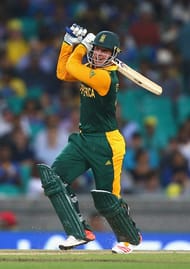
Youth is always a good choice at the top of the order, and having a wicket keeper who can get the ball rolling almost immediately is another asset. In that sense, South Africa’s Quinton de Kock is ideal for the first opener’s slot in this side. His form may have tapered off a bit in recent times, but there’s no denying the fact that the 22 year old Johannesburg native is one for the future.
Blessed with immaculate hand-eye coordination, deft footwork, a remarkable ability to place the ball exactly in the direction he wants it to go, and quicksilver reflexes, de Kock is a nightmare for rival bowling lineups. Because he’s still quite young, he plays with a sense of freedom, tempered at times by a hint of maturity, which makes him even more dangerous as an opponent.
It isn’t every day that your regular, wet-behind-the-ears (in cricketing parlance, strictly) future superstar cricketer scores three consecutive ODI centuries against a side that has triumphed at the 50-over World Cup twice. His conversion rate is amazing too – as of March 2015, QDK has scored six hundreds and five half centuries – thus underlining his importance to the Proteas’ limited-overs set up.
Training with former SA wicket keeper Mark Boucher has also led to improved glovework for this young player. Although he has exciting times ahead in his career, his youthful exuberance can also lead to rash shot selection at times. Nevertheless, he has worked upon those areas to a large extent, and thus secures his spot in this lineup as a pure left-handed batsman who can keep wickets without bowling.
#2 Sanath Jayasuriya (SL - Captain & Opener)
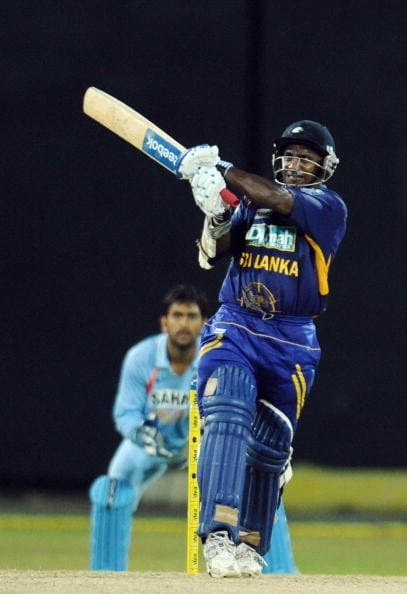
There really isn’t much to say about this veteran all-rounder. In a long career spanning 22 years, mostly overlapping with those of fellow batting greats Brian Lara & Sachin Tendulkar, Sanath Teran Jayasuriya has seen it all and done it all. Matara’s most illustrious son has not only held the hopes of the Emerald Isles during this period, but also successfully made the transition to cricket administration and a brief stint in politics. However, he makes it to this list not for the latter set of accomplishments, but for his all-round skills in the gentleman’s game.
For someone who ravaged bowling attacks all over the world, the former Sri Lankan captain was initially considered to be a bowler who could bat well down the order – usually at 7 or 8. But New Zealand’s success at the 1992 World Cup, where Mark Greatbatch’s utilization as pinch hitter in the early stages of the innings paid rich dividends, changed everyone’s way of thinking.
For the Indian subcontinental powerhouse, the instrument for wreaking such havoc was Jayasuriya, and he responded with aplomb. The 1996 World Cup was his finest hour – such brutal savagery had never been witnessed in the game of coloured kits and white balls. The 189-run effort against India at Sharjah in 2000 was immensely satisfying, considering it had come against a side that boasted of players such as Tendulkar, Ganguly and Yuvraj Singh in the lineup.
An early proponent of the powerful cut over third man, the opener’s leadership abilities over a four year period led his squad into the semi final of the 2003 World Cup, while his exploits in the longest format of the game are also equally renowned. 440 international wickets also do justice to his skill as a slow left-arm orthodox bowler; his round-arm action serves as a perfect foil for the likes of Daniel Vettori, Rangana Herath and Shakib al Hasan if the need arises. With experience comes maturity, so having him as both opener and captain works well in his favour. A true asset to this squad!
#3 Sohail Tanvir (PAK - One drop)
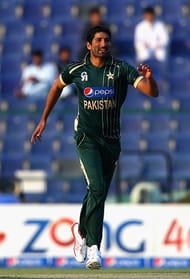
Yes, his position in the batting order is certain to raise more than a few eyebrows. However, his willow-wielding abilities are more than handy, especially if the need is for some quick runs at the pivotal No. 3 position. His injury-prone body may also be a detrimental factor in selecting him for this side, but Sohail Tanvir has reinvented himself as a batting all-rounder, and has demonstrated ample proof of his skills with the ball too.
Indian crowds saw him for the first time when he displayed his wares in the first edition of the IPL in 2008, turning out for the Rajasthan Royals. Prior to this, he was instrumental in steering Pakistan to the summit clash of the inaugural Twenty20 World Cup as well, only to be thwarted by a resurgent Team India. Although his bowling action is unorthodox, it has proved to be highly effective, as a haul of 6/14 in a crucial IPL game showed us all.
He hits the ball hard, and can play the grafting game too if needed, as his valuable partnership with Sarfaraz Ahmed against New Zealand in a recent ODI series suggests. Quite a tricky selection, but definitely packing a punch!
#4 Yuvraj Singh (IND - Style, Flair & the Punishing Finisher)
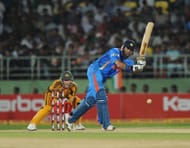
I couldn’t think of a better person to come in at the crucial No. 4 slot in the team. He might not be the player he once was, but Yuvraj Singh’s strength of will, alertness, never-say-die attitude, and utility abilities make him a certainty in any side. The Punjab stalwart has not only held the innings together on more than one occasion, but also played the finisher’s role quite well – a role that is tailormade for him after his exploits in both versions of the limited-overs format, and something that helped the Men in Blue capture the 2011 World Cup
When one thinks of Yuvraj, epithets that come to mind include style and flair. In full flow, the dashing southpaw is a sight for sore eyes. He makes hitting look so wonderfully simple it just adds to the excitement of spectators across the globe. Though he is still a nervous starter against spin, his effective use of the slog sweep and the ability to play off-break bowlers with soft hands in order to push the scoring along have largely helped him to reduce his vulnerabilities against that kind of bowling.
Unlike most left-handed batsmen who prefer the off side for their scoring areas, Singh predominantly goes for the leg side. Against pace, he is completely at home, especially when he is in the zone. Stuart Broad found that out to his cost in 2007, while the rest of the England bowling suffered a similar fate at Rajkot a year later. An adept fielder and an extremely handy bowler, the Sixer King lends balance to this side in his own calm, reassuring manner.
#5 Corey Anderson (NZ - All rounder)
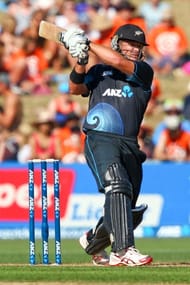
If you have the habit of depositing the ball deep into the stands or against the advertising boards, and can also break stubborn partnerships with considerable ease, then Corey Anderson is your go-to man. With veterans Chris Cairns & Chris Harris calling it a day, and Jacob Oram also out of the side, New Zealand needed someone with similar abilities in both the batting and bowling departments. They found one in the 24-year-old Christchurch resident, and since then, he has established himself as a vital cog in the ODI & T20 scheme of things for the Black Caps.
To break a 17-year old record for the-then quickest century in ODI cricket means you’ve got something special. Anderson has, time and again, in his short career so far, provided sufficient proof of his outstanding skills. While he can score boundaries almost at will, he’s not averse to keeping his head down and play the waiting game if his side needs it. His innings of 81 against Sri Lanka came at a time when New Zealand were making heavy weather of a relatively simple target on a lively pitch. Curbing your natural instincts when the situation gets tricky is a trade-off few are able to make successfully, and the burly left-hander is living proof of that happening.
With the ball, Anderson has made important breakthroughs at various stages of the opposition’s innings. Being a left-arm seamer, he does have the ability to move the ball into the batsman, but at times he has proved to be profligate, resulting in a lot of punishment from the rival willow wielders. Nonetheless, Anderson is worth his weight in gold, as the Black Caps and the Mumbai Indians will freely agree.
My preferred position for this lad is No. 5, because like Yuvraj before him, Anderson has the ability to control the innings and give it the momentum it needs in the closing stages. He does have a cool temperament, although injuries have been his bane of late, and thus needs to be handled very carefully. His bowling and fielding are key assets too, so the Canterbury native is the ideal candidate at this position in the batting order. Maybe he can take over from AB de Villiers in the fastest ODI hundred stakes again!
#6 Shakib al Hasan (BAN - All Rounder)
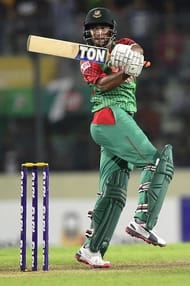
Ahead of the 2015 World Cup, Bangladesh found itself in a rare position in cricketing history when one of its key players became the No. 1 all-rounder in the ICC rankings for Tests, One-Day Internationals and Twenty20 International cricket too. Though it was only for a brief while, Shakib al Hasan affirmed his position as one of the better players to have come out from that part of the world. Having had the honour of leading the national team in multiple formats, the 28-year old is an integral part of the side and continues to excel for his nation on the international stage.
Certain aspects of Shakib’s game have impressed many of the game’s leading lights. His calmness at the crease belies his years, and he has often conjured vital knocks that have delivered victory to his side on more than one occasion. His ability to vary his pace and mastery of the flighted delivery have also paid off handsomely, and an athletic presence in the outfield has also contributed to many of Bangladesh’s victories. In some ways, he is the ideal replacement for veteran Mohammad Rafique, who led the spin department of the side for a considerable period of time; yet, Shakib is a shade more skilful than the older man.
Captaincy has also brought out the best in the young all-rounder at times, and his performances have led Bangladesh into winning a full series against a full ICC Member nation in 2010 (New Zealand) and 2015 (India). Being a skilled bowler, Shakib, along with Yuvraj, can certainly help to reduce the workloads of strike bowlers Daniel Vettori & Rangana Herath, in this lineup.
#7 Daniel Vettori (NZ - First choice spinner)
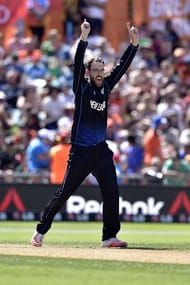
Largely due to the efforts of this lion-hearted cricketer, New Zealand achieved many a remarkable victory across all formats and against all teams. That’s not bad for someone who became the youngest cricketer to play for the Black Caps in Test matches, at the age of 18. For the better part of almost 20 years, Daniel Luca Vettori single-handedly executed the slow bowling duties, battled form slumps & debilitating injuries, shouldered the additional weight of captaincy, and even came out of retirement to have a final shot at World Cup glory. Yet his innumerable contributions are forever etched in cricketing folklore.
The art of left-arm spin saw a revival with Vettori’s presence at the international arena. While he doesn’t turn the ball as much as Shane Warne did, his accuracy, guile, flight and the dreaded arm-ball have bamboozled batsmen around the world even more. It’s not easy to step out and hit him into the stands, and that is what makes him a dangerous bowler. He was raw in 1997, and by 2015, he had added the drift and some more subtle variations in his arsenal, making him even more formidable among his contemporaries.
A capable lower-order batsman, Vettori has played some critical knocks at both Tests and ODIs. Six centuries in the longest format, three of them against Pakistan, speaks highly of the bespectacled southpaw. He might have fallen prey to the vagaries of age and injury, but no international side is complete without his name pencilled in the team sheet.
#8 Chaminda Vaas (SL - Opening Bowler)
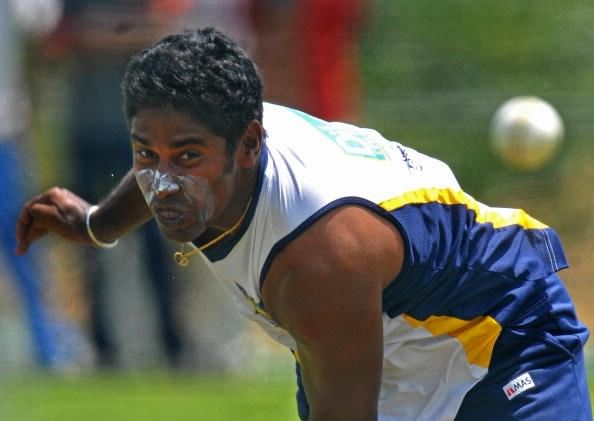
Warnakulsuriya Patabendige Ushantha Joseph Chaminda Vaas had long held the position of being Sri Lanka’s premier strike bowler before the arrival of slinger Lasith Malinga and the wily Ajantha Mendis. The sight of him running in off a measured run-up, eyes on the three stumps covered by the batsman, and unleashing his lethal late in-dippers, was one of the highlights of matches involving Sri Lanka, especially in the 50-over format.
Vaas was a principal member of Arjuna Ranatunga’s 1996 World Cup winning team, forming a potent strike force with Muttiah Muralitharan, and wreaking havoc among opposition batting lineups around the world. It was his skill at generating prodigous swing and extracting lateral movement off the seam that made him an extremely feared bowler. Along with the late indipper, he also possessed a carefully disguised off cutter (something that Bangladesh’s Mustafizur Rahman has also perfected in recent times) and brought in reverse swing during the latter half of his career. I vividly remember the way he castled Virender Sehwag during the historic NatWest series in England in 2002, although he is most remembered for his hat-trick against Bangladesh in the 2003 World Cup, as well as taking 8/19 against Zimbabwe in 2001 – achieving the rare distinction of two ODI hat tricks in the process.
He is also a very useful batsman down the order. At No. 8, it is vital to get a good partnership that might enable you to post a large total or chase it down. Vaas’ style of play suits the limited overs format quite well, and he’s the ideal candidate who fills a crucial role in the lower order. A matchwinner in more ways than one!
#9 Mitchell Starc (AUS - Opening Bowler)
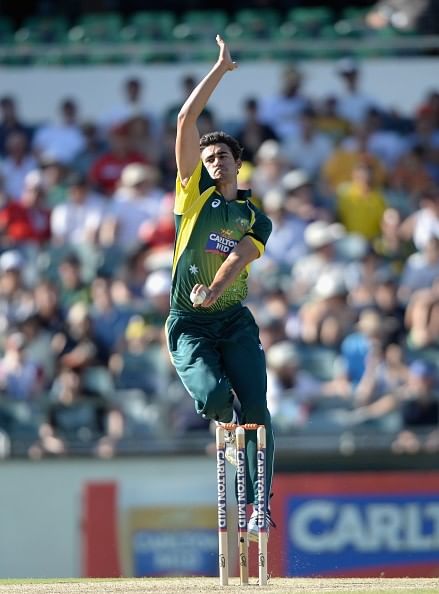
Young, fast and aggressive, Mitchell Starc is currently hot property in the cricket world at the moment. Fresh from his success at the 2015 World Cup, where he finished as the Man of the Tournament, the 25-year old NSW resident is certainly making heads turn with his relentless accuracy and clever variations, along with judicious use of the yorker and the short ball. While the limited-overs format has given him ample opportunities to excel and showcase his talent, the longest format has seen him playing at somewhere close to average.
For someone who started out as a wicket-keeper batsman before switching his focus to pace bowling, Starc is blessed with speed and can use his height to extract large amounts of bounce from the tracks on offer. He also possesses the same skill that fellow left-arm seamer Mitchell Johnson has – bringing the ball into the right hander, although the younger bowler usually manages to make it curve into the body, cramping the batsman for room. At Melbourne in the tri series prior to the World Cup, he achieved the coveted six-wicket haul against India, despite Rohit Sharma’s cracking century. And how many players can boast of dismissing the dangerous Brendon McCullum in the very first over of the game – that too in a World Cup final?
Starc, like the other players before him, is also good with the willow, as scores of 52 in ODIs and 99 in Test matches suggest. He makes a perfect partner for Chaminda Vaas in the bowling department, and provides the exact mix of youth that is balanced by the veteran Lankan seamer’s experience.
#10 Shapoor Zadran (AFG - First change bowler)
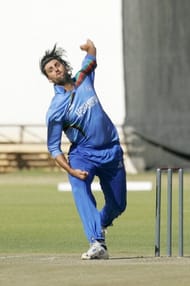
Afghanistan’s pace sensation Shapoor Zadran reminds one of the original image of a fast bowler – speedy, snarling, raw and extremely fiery. By his own admission, the tall, strapping young left-arm fast bowler is always looking to get the batsman hopping around before felling him with a single delivery. Given that he has grown up in the harshest of environments – Afghanistan is a nation ravaged by multiple wars including the one post the dreaded September 11 attacks – it is hardly a surprise that the aggression factor is present in Zadran’s bowling. In his case, though, it works wonders because his focus is always on getting wickets, and he does so with considerable aplomb.
There is an element of former Pakistan tearaway Shoaib Akhtar in this young man. Indeed, he cites the former as his fast bowling idol, and like many immigrants from Afghanistan, he hoped to play for the Men in Green internationally. He reversed his decision and returned to his home country after cricket coaching began there, although family pressures intially limited his appearances. Possessing not just pace but also accuracy, Zadran can get the batsman in all sorts of trouble against the moving delivery, while he works on perfecting his yorker and adds in more to his arsenal before each game.
Afghanistan needs to be encouraged to play against more of the top teams in the world, and Shapoor can certainly get noticed accordingly. For his sheer ability with the ball and some brisk hitting prowess with the bat, he makes it to the XI as a surprise element.
#11 Rangana Herath (SL - Second choice spinner)
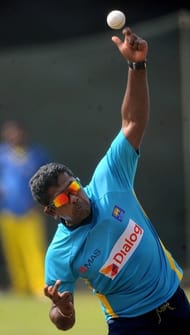
The wisdom of this selection might be fairly questionable, and I wouldn’t like to argue much on that front. Rangana Herath, however, has rightly proven his detractors wrong time and again. If his performance against India at Galle in the recently concluded Test series doesn’t cut him any slack, I don’t know what will. Left-arm orthodox spin is, sadly, fading away in the limited-overs format, and it is only due to the presence of this veteran tweaker that the art is still holding on.
Herath’s accuracy, combined with his mystery delivery that darts back into a right-handed batsman, and his ability to bowl for long spells, make him a vital asset to the side. With Vettori donning the attacking role, it is up to the 37-year old Kurunegala resident to keep the batsmen tied down. While flight is also an important factor in the number of wickets he has taken recently, his travails in the ODI arena – 74 wickets in 71 games – do not do justice to his abilities.
He can’t bat for nuts, to be honest, but he does have the ability to score some runs, even if they come off from wild slashes and nicks. Still, it is his bowling that commands respect, and thus he makes it to the Left-Handed ODI XI on that basis.
Brand-new app in a brand-new avatar! Download CricRocket for fast cricket scores, rocket flicks, super notifications and much more! 🚀☄️
